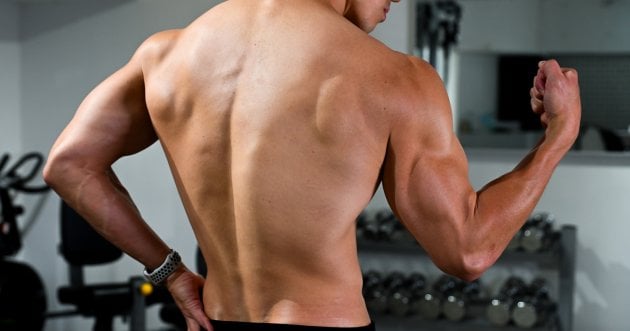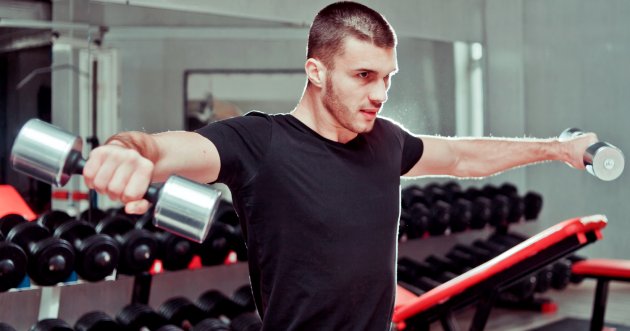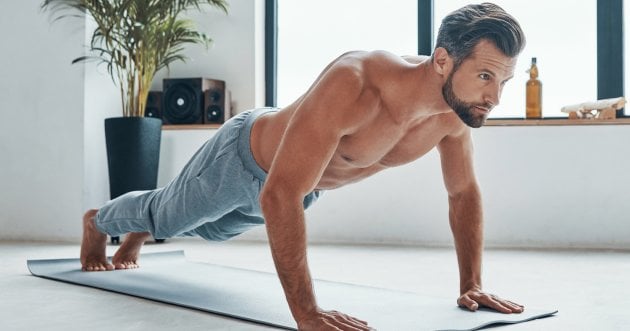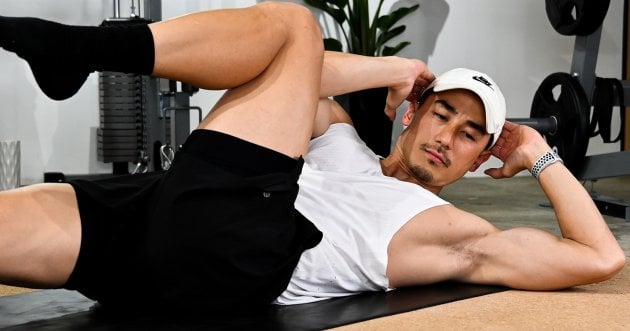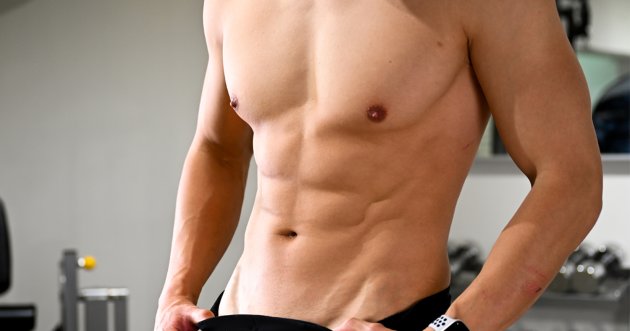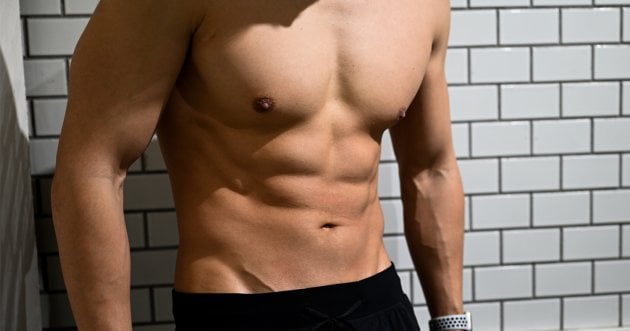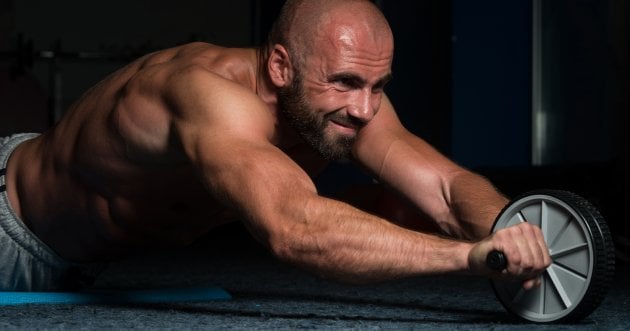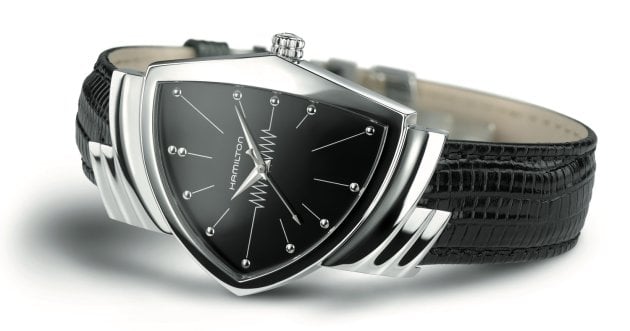
Push-ups are a staple of upper-body strength training menus. Because it is an extremely simple movement, many people may be doing it in their own way. In this issue, we asked personal trainer Taiyama Matsuura to show us how to do push-ups properly.
In 2016, he began working as a trainer as a member of Beyond Gym’s start-up staff. Served as store manager of the Horie store in Osaka, Japan; in 2017, he reached the pinnacle in the Mr. Japan contest, after which he went independent. In October 2022, he founded Waffle Gym in Tachikawa, Tokyo. He is always ready to propose muscle training menus that meet the needs of customers.
Suponsered by
What parts of the body can be trained by push-ups?
The name “push-up” often leads people to believe that push-ups are for arm training. In fact, however, the main target of this training is the pectoralis major muscle, which is the muscle of the chest. The pectoralis major muscle is one of the largest muscles in the entire body, so training it will help raise basal metabolism, and it is also an area where subcutaneous fat does not easily accumulate, making the results easy to see. It goes without saying that continuous push-ups will give you a much better looking silhouette when you put on clothes.
Here’s the proper way to do push-ups!
Let’s start with the proper way to do push-ups. First, check out the video below, and then try doing push-ups yourself by referring to the cautions and points for each part.
Starting position for push-ups
From the position on all fours, stretch your legs out and place your hands about one fist wider than shoulder-width apart. It is preferable to place your hands straight, as pointing the tips of your hands inward can easily hurt your wrists. Also, make sure that your head and toes are in a straight line and that your posture remains stable during the movement.
▼Bottom position for pushups
Slowly lower your body down while opening your elbows outward. Ideally, the body should be lowered until the chin touches the floor, if possible. It is also important to fully pull the shoulder blades together to engage the pectoral muscles. Once you have lowered your body firmly, return to the starting position and repeat until you reach your limit.
What are some tips for working your muscles with push-ups?
1) “You must keep your eyes slightly forward!”
The main point of push-ups, as well as any other exercise targeting the pectoral muscles, is to keep the chest up and the shoulder blades close together. And in order to maintain this posture, it is important to be aware of where to bring your eyes to, according to Mr. Taizan. “If you look straight down and pull your chin in, your back tends to round out, whereas if you look straight ahead, your neck becomes fatigued and it becomes difficult to maintain your posture. By raising your eyes slightly and looking diagonally forward, you can easily maintain your posture,” he told us.
Be conscious of keeping your chest up and your body in a straight line.”
A common mistake in push-ups is to be so conscious of keeping the chest up that you end up with a slumped back. While it is great to have a firm chest, this not only makes it difficult to fully lower the body, it also makes it difficult to maintain form and can easily lead to lower back pain. Therefore, it is important to create a starting position that keeps the chest up but does not bend at the waist. Incidentally, if you tend to arch your back, your abdominal muscles may be weak, so it is a good idea to include a menu for strengthening your abdominal muscles so that you can create a stable form.
What should I do if I can’t do push-ups or if they get hard too soon?
If you can’t do push-ups, or if they feel too hard after about five push-ups, it is recommended that you kneel to lighten the load. It is recommended that you start by aiming to do 3 sets of 10 kneeling push-ups one day a week, and then gradually increase your strength by increasing the frequency of training, varying the speed of movement, and increasing the number of times and sets when you feel that you are not getting enough.
What are the variations of push-ups? Introducing 5 main menus
Push-up variation 1: “Narrow push-up
Push-ups performed with a narrower hand width are called narrow push-ups. While the pectoral muscles are mainly trained in regular push-ups, the arms (triceps) are the main target in this exercise, so it is recommended for those who want to make their arms thicker. The basic movements remain the same, but the key is to set the width of the hands at such a point that the thumbs of both hands touch each other, and to bend the elbows as if they were folded. Incidentally, if you combine it with other arm training, it is better to do the narrow push in the beginning because it is a mid-range exercise with a high load on the muscles.
Push-up Variation 2: “Wide Push-Up”
The wide push-up is an exercise in which the hands are wider than in a normal push-up. By widening the hands, the stretch of the pectoral muscles can be felt more, and is recommended for those who do not feel the chest being worked by regular pushups or for those who want to strengthen the outer part of the pectoral muscles. There are no major differences in form other than the wider hand width, and the tips and cautions for making the push-up work are the same as for regular push-ups.
Push-Up Variation 3: “Decline Push-Up”
A decline push-up is a push-up performed with the legs on a pedestal such as a chair. By raising the legs, the center of gravity is tilted toward the head, which makes it easier to stimulate the upper part of the pectoralis major muscle. The tips and precautions for this exercise are the same, but since the stomach and buttocks tend to be lower than in the normal push-up, it is necessary to be more conscious of keeping the body in a straight line. Also, if the legs are raised too high, the main target will change to the shoulders, so the rule of thumb is to save the height to 30~50cm.
Push-up Variation 4: “Incline Push-Up”
The incline push-up is a push-up performed with both hands on a platform. As with the kneeling push-up, the incline push-up is useful for beginners, those who are not confident in their physical strength and muscular power, or for those who cannot do a single push-up at the end of a push-up session. It is also effective for strengthening the lower part of the pectoralis major muscle, and is recommended for those who want to create a well-defined line of the pecs. When performing this exercise, be very careful that the platform on which you place your hands does not slip or fall over.
Push-Up Variation 5: “Single Leg Push-Up”
The single-leg push-up (single-leg push-up) is, as the name implies, a push-up in which only one leg is placed on the ground. Like regular push-ups, it is effective for strengthening the pectoralis major, triceps, and deltoids muscles, as well as the core due to the lack of stability in form. Although slightly more difficult than the conventional push-up, it is easier to maintain balance by placing the feet on the extension of the body axis and by setting the hands slightly wider. If regular push-ups are not enough for you, why don’t you give it a try?

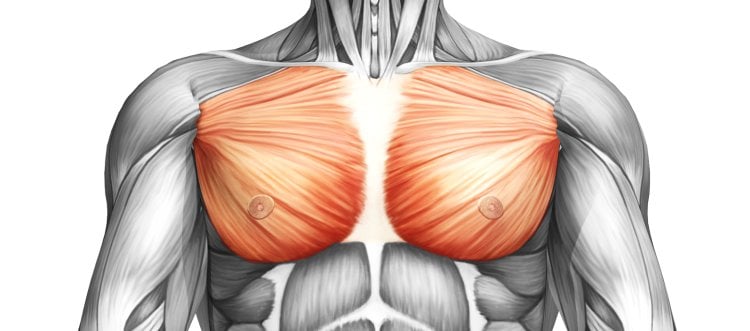
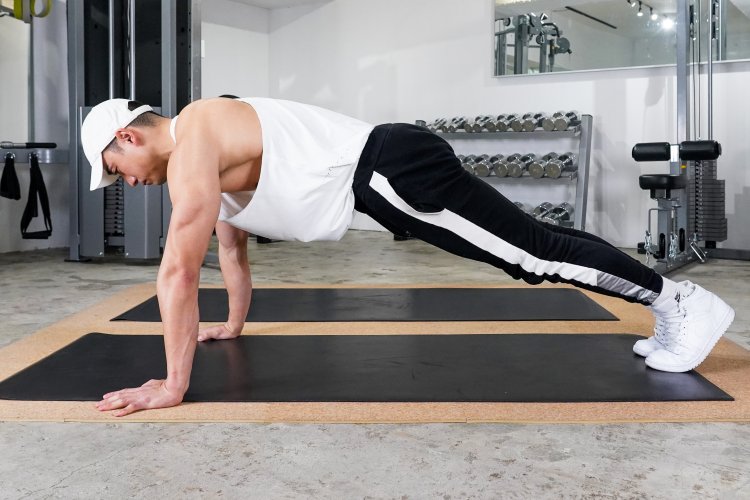
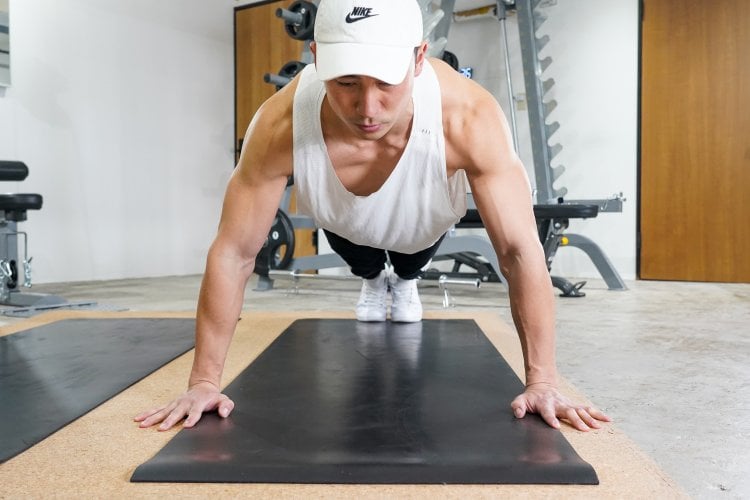
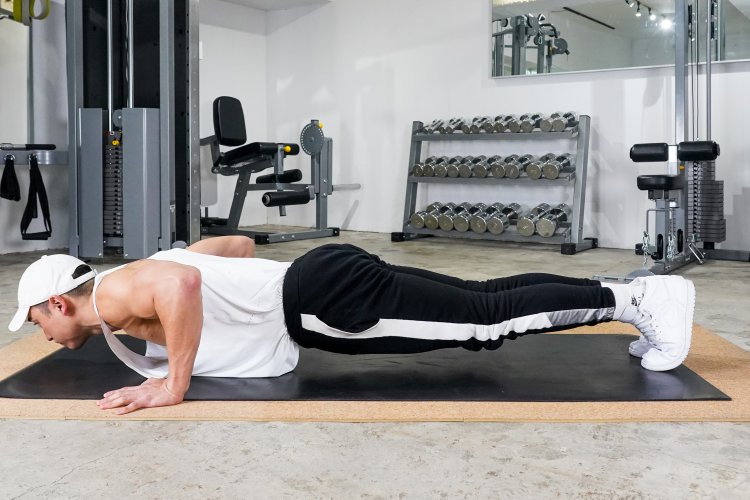
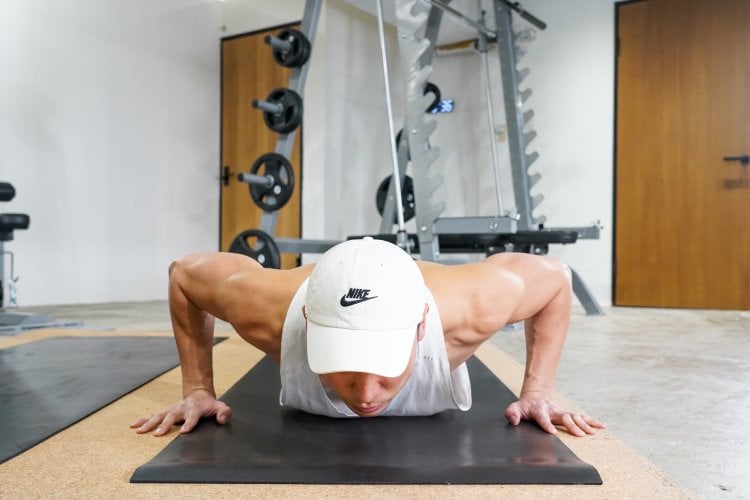
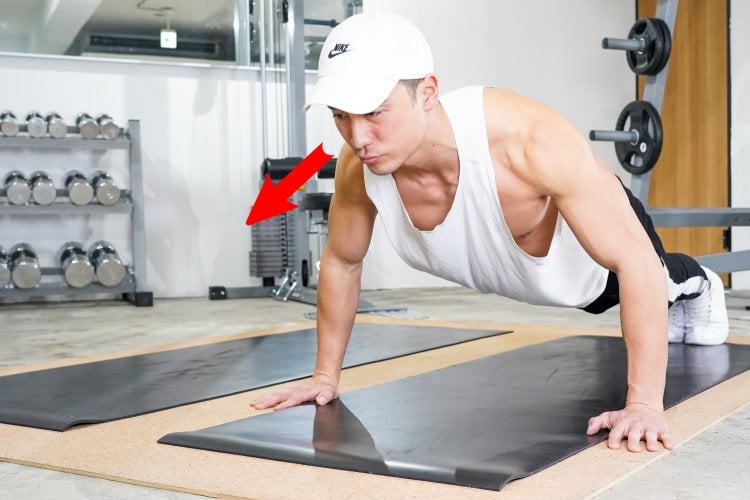
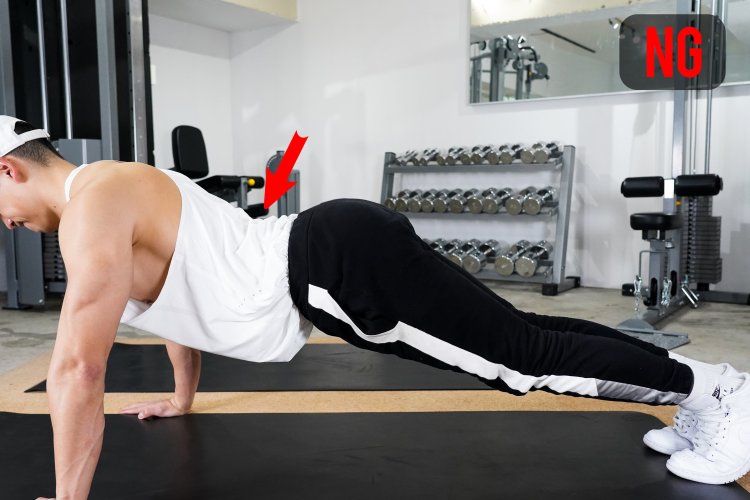
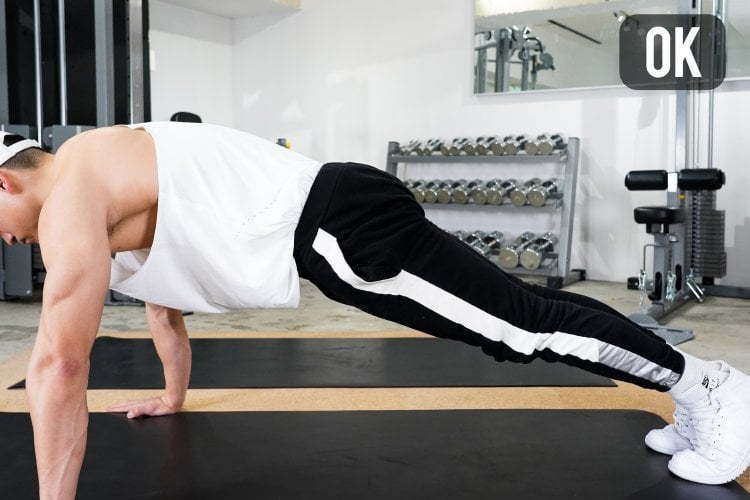
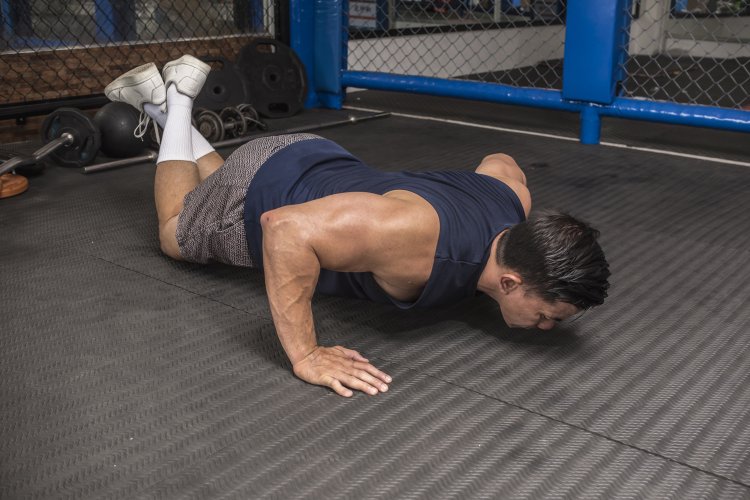
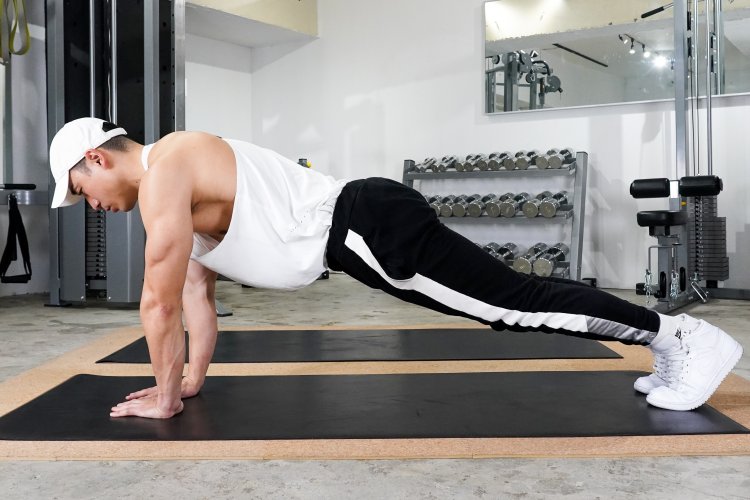
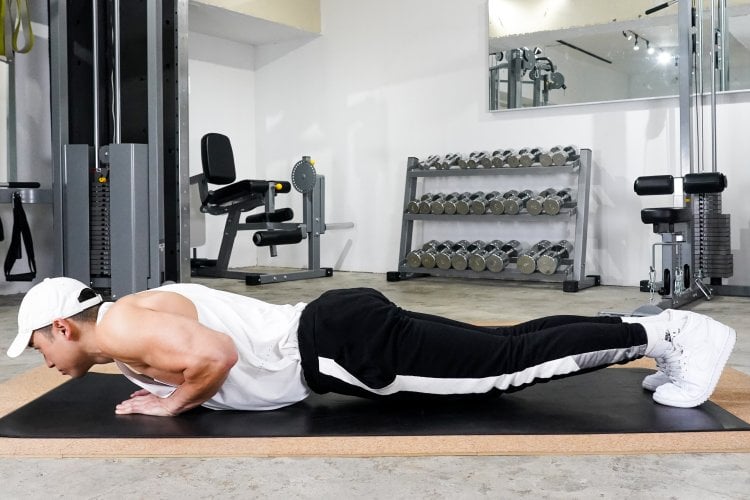
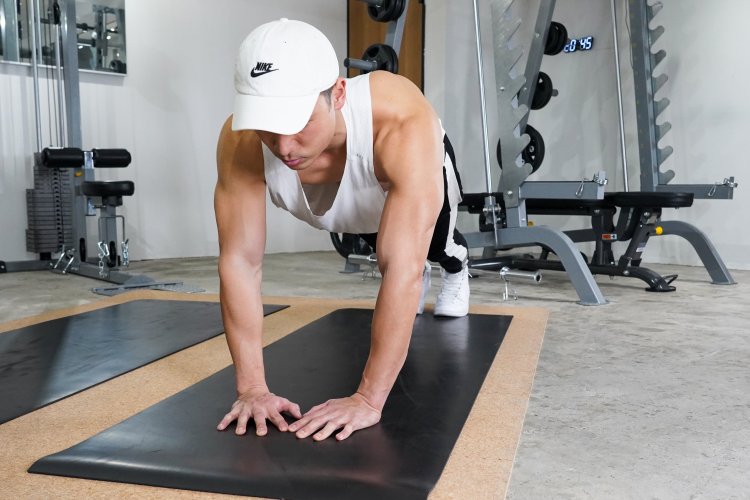
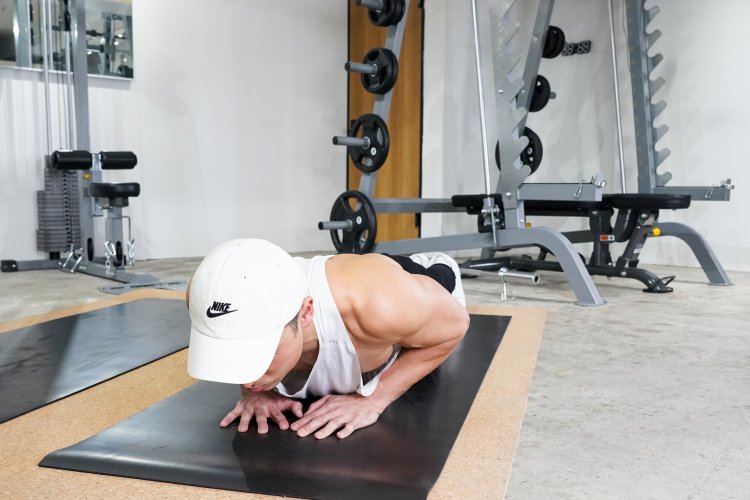
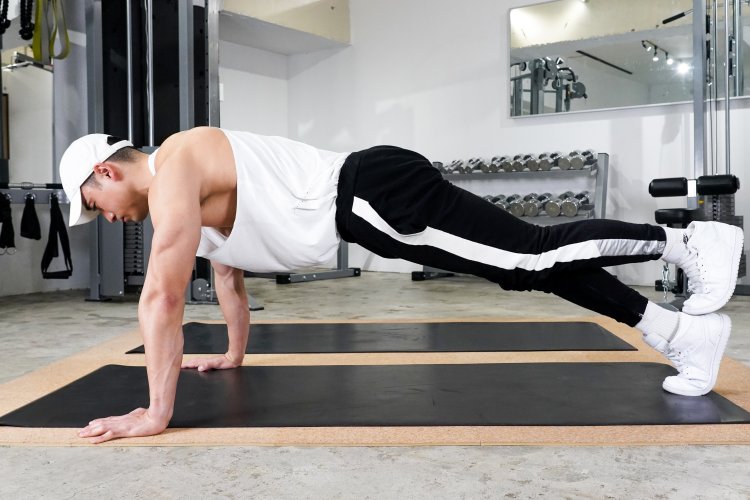
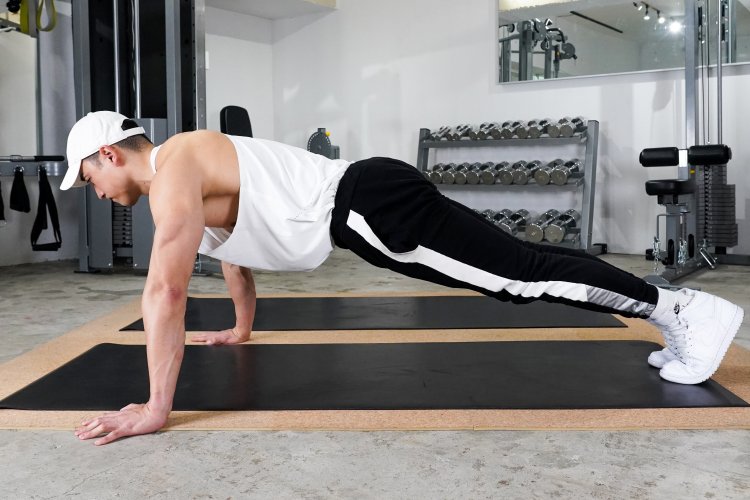
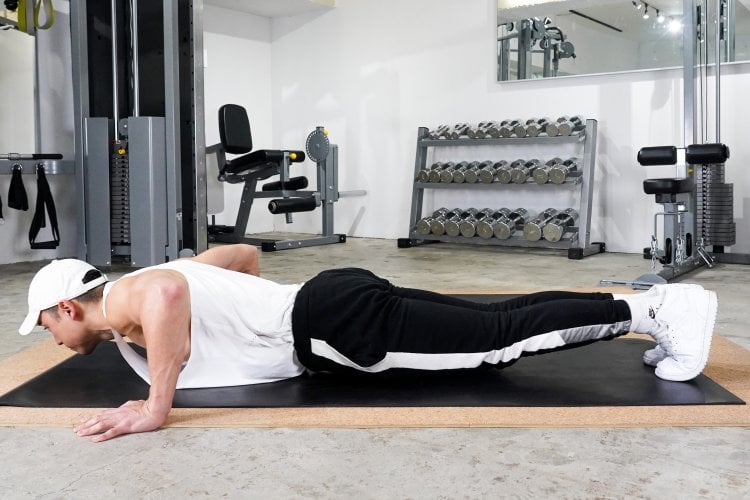
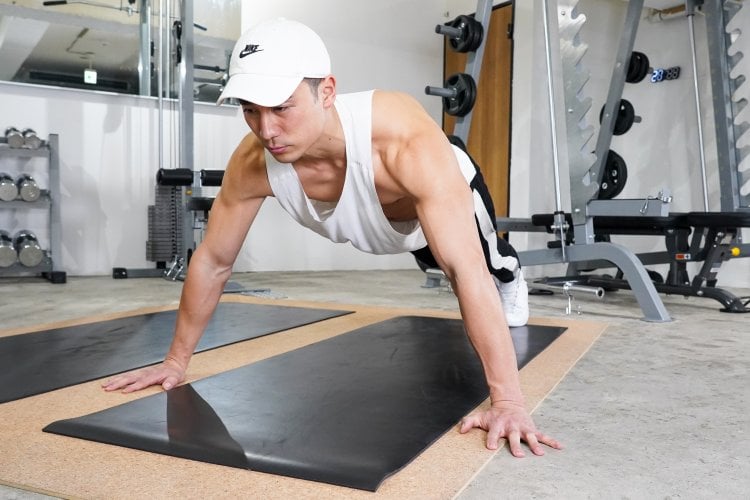
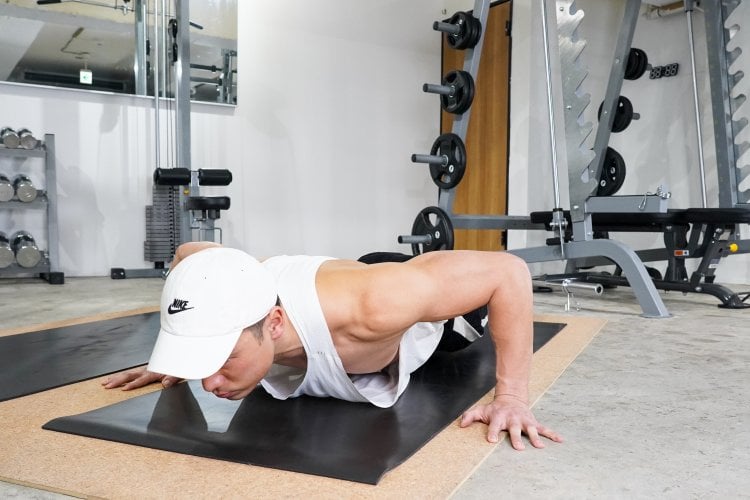
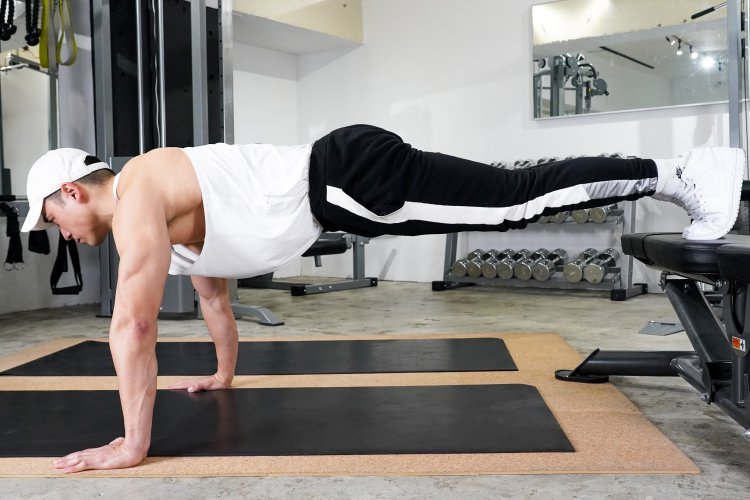
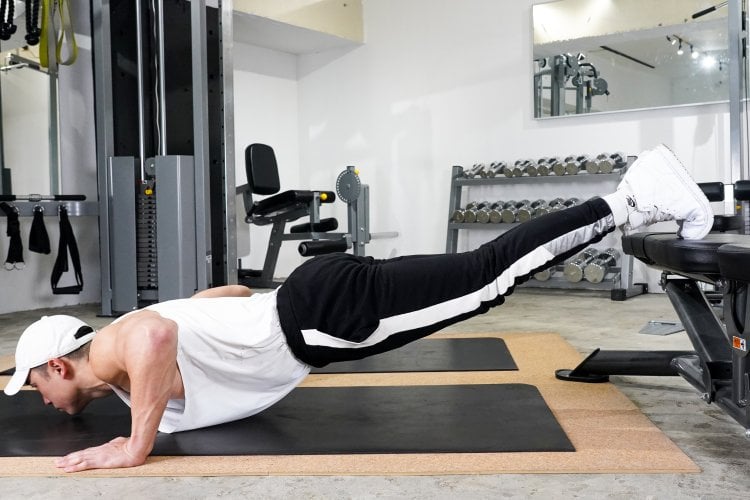
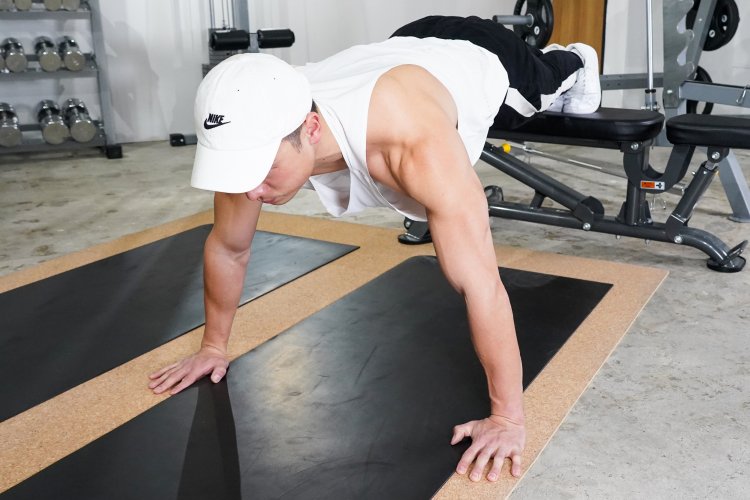
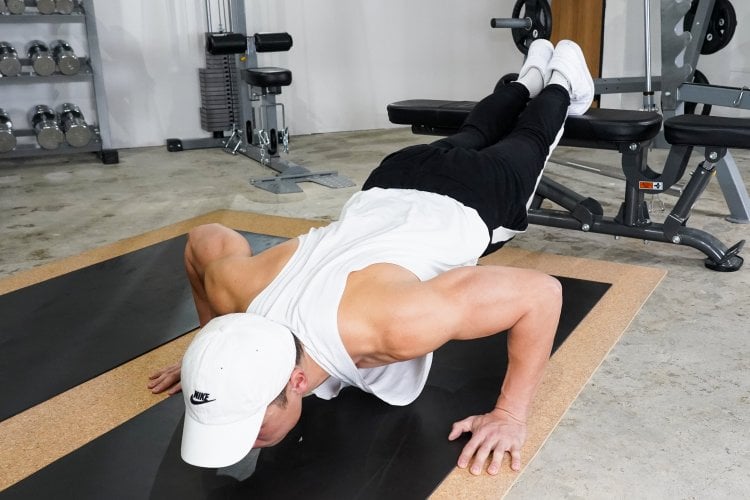
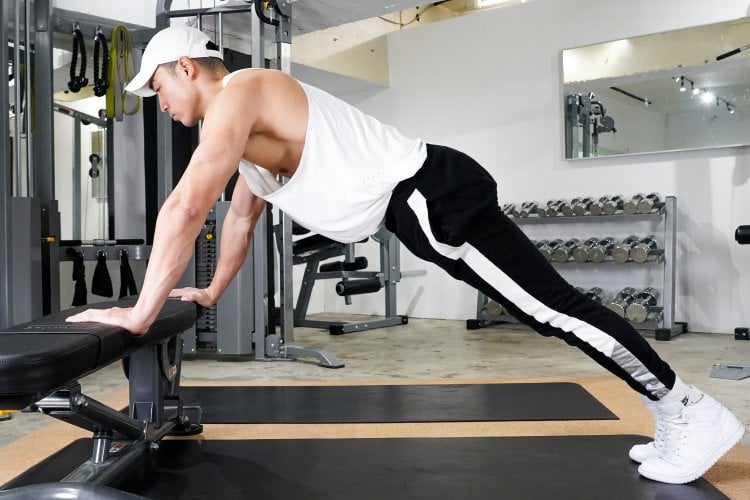
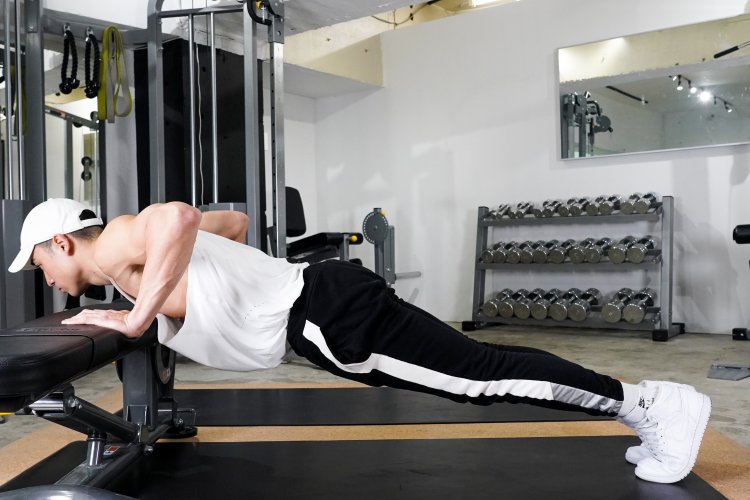
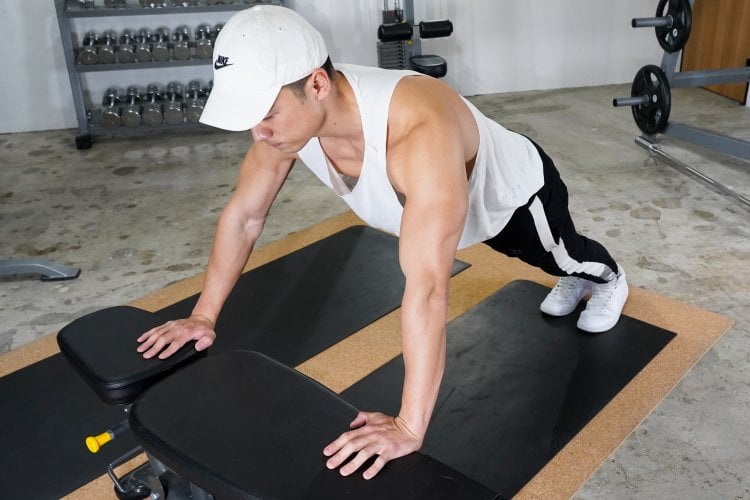
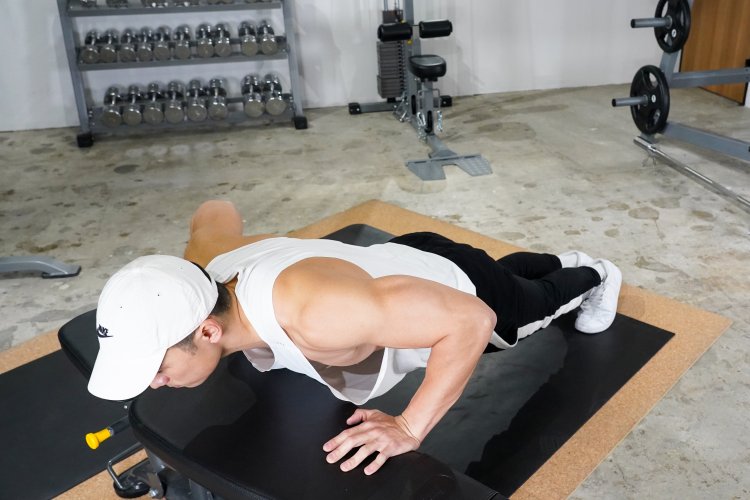
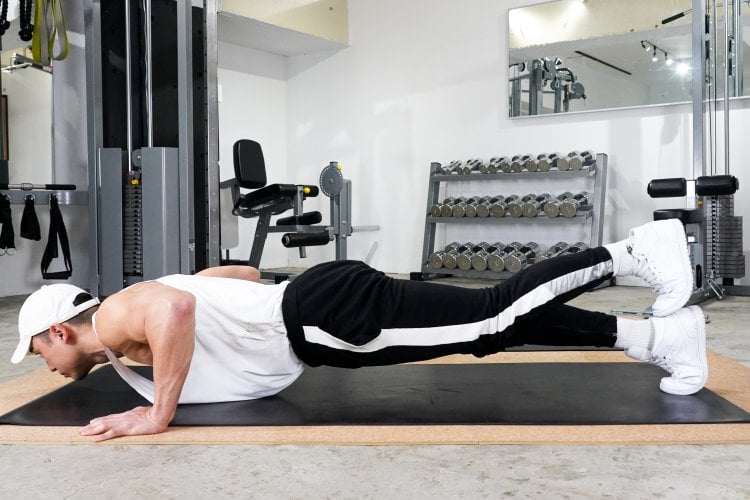
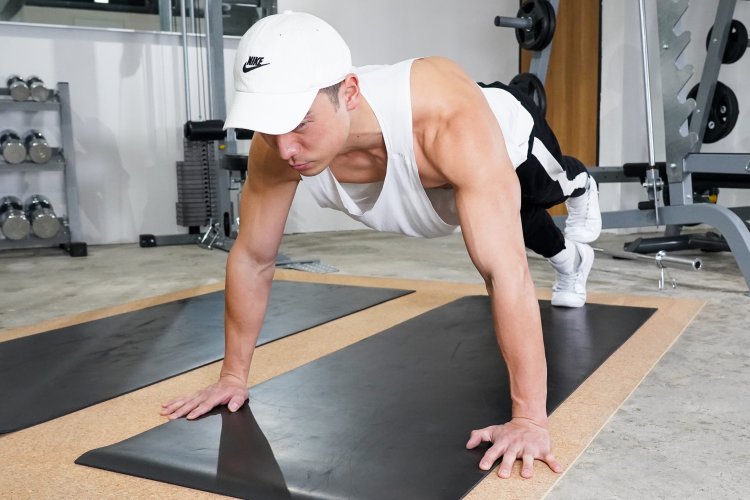

![What are the specific 5 changes that muscle training can bring to a man? [“The truth as experienced by practitioners.”]](https://otokomaeken.com/wp-content/uploads/2023/12/3ecb709c1f1613850249ba743b4b1457-630x331.jpg)
